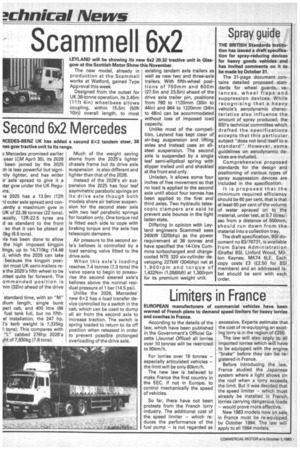Spray guide
Page 20

If you've noticed an error in this article please click here to report it so we can fix it.
THE BRITISH Standards Institution has issued a draft specification for spray-reducing devices for heavy goods vehicles and has invited comments on it to be made by October 31.
The 21-page document contains detailed proposed standards for wheel guards, valances, wheel flaps and suppression devices. While recognising that a heavy vehicle's aerodynamic characteristics also influence the amount of spray produced, the BSI's technical committee which drafted the specifications accepts that this particular subject "does not lend itself to a standard". However, some guidelines on aerodynamic devices are included.
Comprehensive proposed standards for the design and positioning of various types of spray suppression devices are included in the specification.
It is proposed that the minimum required efficiency should be 60 per cent, that is that at least 60 per cent of the volume of water sprayed on to the material, under test, at 0.7 litres/sec from a distance of 500mm, should run down from the material into a collection tray.
The draft specification, BSI document no 83/76731, is available from Sales Administration (Drafts) BSI, Linford Wood, Milton Keynes, MK74 6LE. Each copy costs £3 (£2.50 for BSI members) and an addressed label should be sent with each order.




































































































